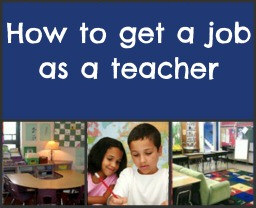Myths and Realities on Bilingualism

The Background
Years of language research revealed that there may be as many children who grow
up being bilinguals. Despite this reality, there have been constant criticisms
and skepticisms on how bilingualism
can actually put
speakers into an advantage. Being poorly understood, it has
continued to be unpopular among countries having one single language considered
dominant. With the lack of familiarity and in depth understanding, bilingualism
is considered by many as a hindrance rather than an edge in learning. Parents,
teachers, educators, and specialists viewed bilingualism as a negative
consequence.
In the past few decades, studies on the acquisition of two languages at once
revealed that its process is complex. Unlike language acquisition for
monolinguals, bilinguals have a rich source of language exposure not just from
their parents but from the members of the extended family, playmates,
classmates, and even care takers. Exposure to these sources also varies greatly
and may cause language ability in any of the two languages to fluctuate over
time.
The Myth
Bilingualism has been considered a sign of deficiency. Issues on whether it
actually adds or subtract to students’ development continue to arise. Studies
done some years ago returned with bleak outcomes and understanding. In the early
1950s, a research done by Thompson concluded that bilingual children become
language handicaps. This is rooted on the fact that learning one language alone
is difficult enough and learning two at a time is even harder. This is what
inspired many schools to discourage bilingual instructions.
With research stating what has been considered true about bilingualism,
children have suffered enough being misunderstood or considered deficient. This
however, finally came into its end as developments in educational research
revealed that former conclusion made on bilingual studies were actually false.
In a 1983 research conducted by Garcia on Mexican-American bilinguals, it was
revealed that bilinguals who live in nurturing and supportive environments do
not develop a language handicap as previously claimed. Instead, both
monolinguals and bilinguals display the same level of development on
measurements of vocabulary, phonology, or syntax. It was then concluded that
bilingualism does not seem to interfere with the development of either language.
The Code Switching
 Often considered negative, bilinguals often do language or code mixing. There
are times when bilinguals are observed to be using two languages as one. In the
past, this has been considered as evidence of language confusion and a very good
point of attack for supporters of monolingualism. For many, mixing words from
two languages when expressing something is a clear manifestation of
bilingualism’s drawbacks. This, however, was proven otherwise as 1988 research
done by August and Garcia revealed that this period in bilingualism is equal to
that of plural noun confusions among monolinguals, and thus, a normal language
development stage. Often considered negative, bilinguals often do language or code mixing. There
are times when bilinguals are observed to be using two languages as one. In the
past, this has been considered as evidence of language confusion and a very good
point of attack for supporters of monolingualism. For many, mixing words from
two languages when expressing something is a clear manifestation of
bilingualism’s drawbacks. This, however, was proven otherwise as 1988 research
done by August and Garcia revealed that this period in bilingualism is equal to
that of plural noun confusions among monolinguals, and thus, a normal language
development stage.
Code switching can only be bad when sentence structures seem not to fit. In
America alone, millions of children use two languages – English and the one
which their families speak. Instead of considering it a liability, it has been
used as a method for preserving heritage and identity. With this, code switching
is often utilized especially when what was meant to be said does not have an
exact equivalent in the language originally used. Duality of the language used,
therefore, does not hamper language development but rather keep the bilinguals’
language discrimination active.
Bilingualism: Myths Against Realities
With so many issues being thrown at bilingualism, here are the most popular
issues and their corresponding research based findings:
1)
 Bilingualism causes
confusion. Perhaps, this is the number one mistake people have as far as
their understanding of bilingualism. For many, raising children or making an
older child learn two languages will make way for confusions as they will find
it hard to differentiate both language structures. This is also the very reason
many immigrant parents chose to drop their linguistic heritage to focus more on
developing English proficiency for academic success. According to Barbara Zurer
Pearson, author of the book “Raising a Bilingual Child”, even days old infants
can identify language differences especially if they are distinctly different
from each other- like Arabic and French. For languages that are quite similar,
it will take about half a year to be able to discriminate one from another. At
some stage of development, bilinguals may use sounds and words from any of the
languages and mix them in one sentence. This might be because borrowing is the
only way to express what was meant. In many cases, this can happen as adults
with whom the children interact with use both languages the same way. One reason
for this is the fact that code mixing among adult or immigrant bilinguals is
common. Despite this, it is noticed that most proficient bilinguals actually mix
languages without violating the rules of syntax in both languages. For example,
when there is no equivalent noun for a thought expressed in English, one may
borrow a noun from Spanish or any other language spoken to fit the idea without
violating the rules of grammar or syntax. Additionally, code mixing among young
bilinguals often happens as a result of frequent exposure to the pattern of
language used in the community. Bilingualism causes
confusion. Perhaps, this is the number one mistake people have as far as
their understanding of bilingualism. For many, raising children or making an
older child learn two languages will make way for confusions as they will find
it hard to differentiate both language structures. This is also the very reason
many immigrant parents chose to drop their linguistic heritage to focus more on
developing English proficiency for academic success. According to Barbara Zurer
Pearson, author of the book “Raising a Bilingual Child”, even days old infants
can identify language differences especially if they are distinctly different
from each other- like Arabic and French. For languages that are quite similar,
it will take about half a year to be able to discriminate one from another. At
some stage of development, bilinguals may use sounds and words from any of the
languages and mix them in one sentence. This might be because borrowing is the
only way to express what was meant. In many cases, this can happen as adults
with whom the children interact with use both languages the same way. One reason
for this is the fact that code mixing among adult or immigrant bilinguals is
common. Despite this, it is noticed that most proficient bilinguals actually mix
languages without violating the rules of syntax in both languages. For example,
when there is no equivalent noun for a thought expressed in English, one may
borrow a noun from Spanish or any other language spoken to fit the idea without
violating the rules of grammar or syntax. Additionally, code mixing among young
bilinguals often happens as a result of frequent exposure to the pattern of
language used in the community.
2) Bilingualism causes speech
delays. In the past, parents were pushed to just use one language when
talking to the child to avoid this problem, thus, making way for more
monolinguals to exist. While some children raised in a bilingual environment may
acquire language quite late than those of monolingual homes, it is not always
the case. Language experts believe that bilingualism isn’t the culprit here.
Stubbe Kester, president of Bilinguistics, says that some children develop
language later than others and this does not mean to only happen among
bilinguals, and those in dual language environments gain the same language rate
as the monolinguals. Perhaps, many tend to believe in the myth that bilingualism
may cause delays in language learning. It must be remembered, however, that
children exposed to language environments exhibit different milestones.
Individual differences exist in language acquisition as some would learn complex
sentences ahead of others. It should be noted that people require different
length of exposure to language before acquisition takes place. Bilingual or
monolingual, language is acquired at different speed and level of exposure. In
addition, language delay exists in both types of language users. Parents who
wish to raise bilingual children should remember that correct language exposure
is necessary to develop acquisition of two languages and that radical changes
should be avoided so difficulties in dual language acquisition will be lessened.
3) Bilingualism hinders
language mastery. It is a common belief that people, especially children,
when exposed to two languages will never develop mastery in either of the two;
thus, they are not proficient in any one of their languages. Research, however,
said that bilinguals can acquire language proficiency in the same way
monolinguals acquire their language despite their lower level of exposure. With
regular use and practice, bilinguals
develop mastery in phonology and grammar of the languages they know. This is
made possible by substantial amount of dual language exposure. Though there is
obvious difficulty like vocabulary learning, bilinguals are observed to be doing
just as the same rate with monolinguals in language development. This is due to
the fact that
vocabulary difficulty is only short term and thus can be overcome as exposures continue. In
addition, unlike monolinguals who just concentrate on one language, bilinguals
have to define the differences between two languages being learned. This makes
them aware of the differences in structures and usage of both languages. Because
bilinguals are almost always exposed to two languages- one at home and one in
the community, it is not impossible to gain mastery. There is a great need for
parents to provide rich language experiences in order to successfully raise
bilingual children. Community support and exhibition for love of heritage can be
additional factors. When parents model the way, it is easier for children to
acquire both languages without much difficulty, so bilingual parents can be a
good start point for raising bilingual children.
4) Bilingualism can only be
achieved if practiced from birth.
 Since language acquisition is often
connected with mother tongue alone, many still believe that bilingualism can
only be made to take place from the moment of birth. This, however, is not
supported by linguists. While there is what we call the “critical period” in
language acquisition, it is never too late to learn another language and become
bilingual. Children between 5 to 10 years old are learning faster compared to
those who are past 17. Spongy memory of the young learners makes it easier for
language acquisition to take place. After teenage years, there is a need for
greater and consistent effort to be able to learn another language, especially
if it is quite distant in structure with the mother tongue. In addition,
language acquired at puberty is stored in the different side of the brain,
making translation from native language necessary before comprehension or
expression of thoughts. It is true that communication in bilingual children is
different, and social contexts must be mastered in order to successfully acquire
the language. While adults learning to be bilingual will find it challenging to
understand social situations where vocabulary or expressions are used, exposure
is a very helpful factor. Because their level of understanding is more complex
than children, it is advantageous in weighing in the differences of language use
according to contexts. Given the correct training and frequent exposure, even
older learners can acquire the social language skills necessary to express and
understanding meanings in two languages. Since language acquisition is often
connected with mother tongue alone, many still believe that bilingualism can
only be made to take place from the moment of birth. This, however, is not
supported by linguists. While there is what we call the “critical period” in
language acquisition, it is never too late to learn another language and become
bilingual. Children between 5 to 10 years old are learning faster compared to
those who are past 17. Spongy memory of the young learners makes it easier for
language acquisition to take place. After teenage years, there is a need for
greater and consistent effort to be able to learn another language, especially
if it is quite distant in structure with the mother tongue. In addition,
language acquired at puberty is stored in the different side of the brain,
making translation from native language necessary before comprehension or
expression of thoughts. It is true that communication in bilingual children is
different, and social contexts must be mastered in order to successfully acquire
the language. While adults learning to be bilingual will find it challenging to
understand social situations where vocabulary or expressions are used, exposure
is a very helpful factor. Because their level of understanding is more complex
than children, it is advantageous in weighing in the differences of language use
according to contexts. Given the correct training and frequent exposure, even
older learners can acquire the social language skills necessary to express and
understanding meanings in two languages.
5) Bilingualism causes
speakers to code mix due to lack of proficiency. When bilinguals mix
language codes, they are often taken as a sign of language inefficiency. For
many, it is interpreted as the failure to find the right words because one lacks
the proper language capacity. In contrast, experts believe that mixing
linguistic codes are actually harmless and quite unavoidable. For bilinguals,
mixing terms from both languages to express meanings is a way to sort out
languages. Additionally, most bilinguals have a dominant language, the one which
is often used in most times of the day. When stating information or expressing
one’s self, it is but natural that they borrow words from the dominant language
to apply in the less dominant one. Experts agree that this phenomenon is
temporary as the transition on the mastery of both languages takes place.
Eventually, with enough exposure, this will be eliminated. For most bilinguals,
however, code mixing is not about not knowing what to say in a certain language
but rather, choosing the term that conveys the perfect meaning of what they want
to say. Because this practice is common in adults, there is a no doubt child
bilingual will follow the same. In addition, since language codes are embedded
in the brain at the same rate, it is quite hard to keep languages completely
separated. Luckily, with their ability to differentiate two different languages,
it is even easier to use one specific language as monolinguals do.
Closing Thoughts
 Research proved that bilingualism involves a complicated process that builds a
foundation for both languages to be mastered. Different from how we normally
view it, the acquisition of two different languages does not seem to ignite
competition of mental process that leaves bilinguals at a disadvantage. In fact,
the duality of speaking multiple languages helps cognitive developments. Bilingualism, preceded by code
mixing, should not be considered a drawback. Generally, bilinguals develop
proficiency in both languages based on their level of exposure. So, a bilingual
who just returned from a vacation in an area where one of the languages is used
primarily may prefer to communicate in that language for a while. This, however,
is short term and the language preference can be diverted to that which is used
in dominance. Research proved that bilingualism involves a complicated process that builds a
foundation for both languages to be mastered. Different from how we normally
view it, the acquisition of two different languages does not seem to ignite
competition of mental process that leaves bilinguals at a disadvantage. In fact,
the duality of speaking multiple languages helps cognitive developments. Bilingualism, preceded by code
mixing, should not be considered a drawback. Generally, bilinguals develop
proficiency in both languages based on their level of exposure. So, a bilingual
who just returned from a vacation in an area where one of the languages is used
primarily may prefer to communicate in that language for a while. This, however,
is short term and the language preference can be diverted to that which is used
in dominance.
Learning
How to Overcome Test Anxiety
15 Incredible Yet Weird Story Lessons About Wisdom
Myths and Realities on Bilingualism
The Benefits of Being Bilingual
Learning Disabilities: Types and Signs
The Role of Listening in Language Learning
Helping Your Child Develop a Love for Writing
How to Teach Your Kids to Read
The Influence of Music on Children’s Learning
Teachers
5 Reasons to Use Norm Referenced Tests in the Classroom
5 Ways to Use Criterion Referenced Test in the Classroom
Photo Memoir: Writing Assignment
Top 5 Things to Know About Your ESL Students’ Backgrounds
Group Work in College ESL Classrooms
How to Teach Business English in ESL Setting
Benefits of Using Graphic Organizers in the Classroom
How to Use Storytelling in Language Teaching
How to Correct Student Essays
The Most Common Problems in ESL Classrooms
Tips on Teaching ESL Students Vocabulary
Praise: A Great Motivator for Student Achievement
Peer Feedback is a Great Tool in Writing Classes
 |